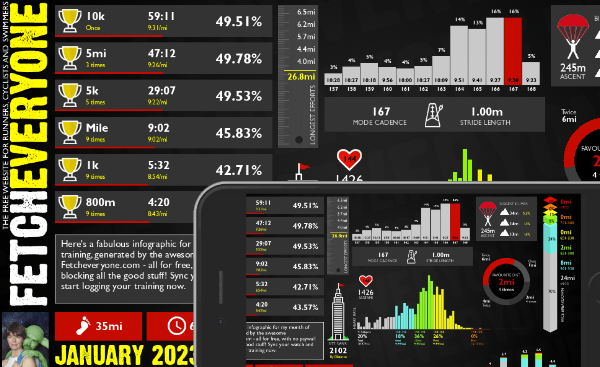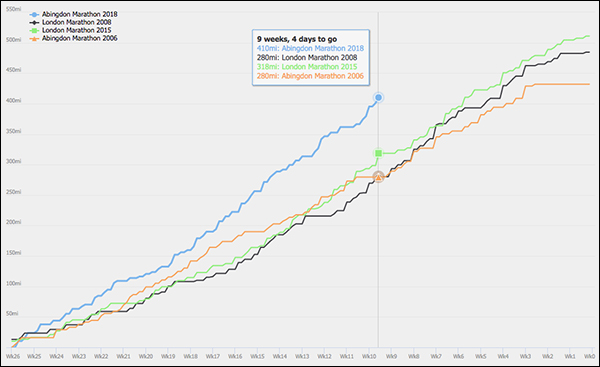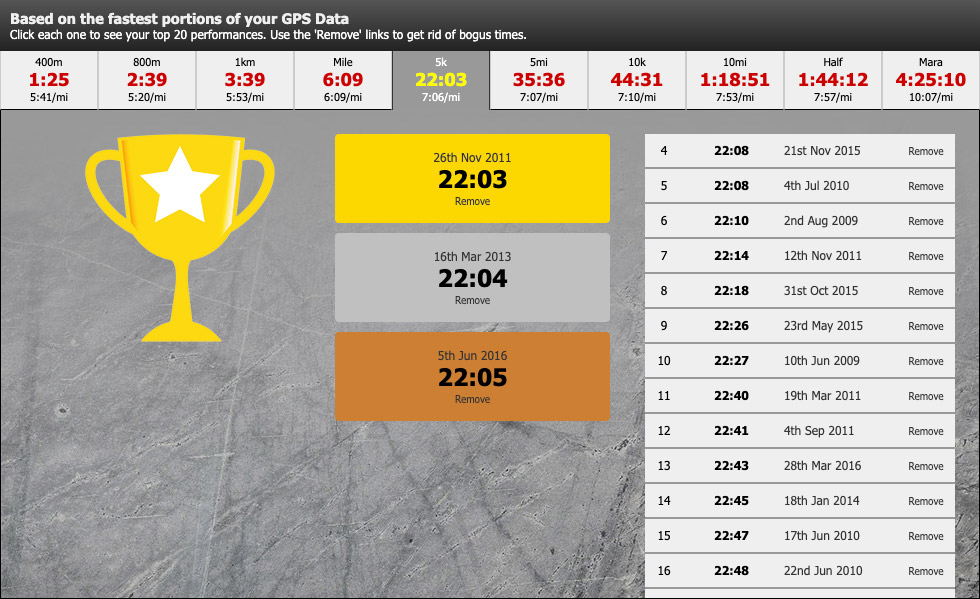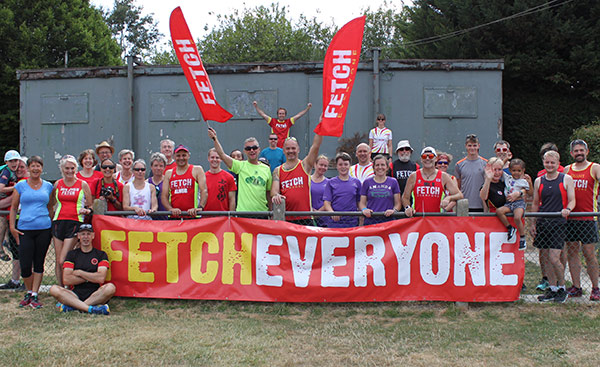Be Your Own Boss
Run it up the flag pole, and see who salutes!

Whenever there are elite distance runners on TV I wonder just how they manage to churn out mile after mile with an unending endurance. It's clear they're naturally talented, but they also work extremely hard to produce such fabulous achievements.
We all work hard – whatever we do – and we all have to fit our running in around our nine to five lives. But these athletes are not just hard workers – they are the successful CEO's of highly complex organisations, with a keen eye for understanding and extracting every last ounce of profit. They have built this organisation from the ground up, crafting each and every department to work harmoniously towards their goals.
So grab a pastry and a coffee, make a window in your diary, and let's gather by the water cooler for a quick power chat to help you take a more professional approach to your training. Going forward. Etc.
Recruit The Right Workers
The fibres in your muscles are classed as fast twitch and slow twitch. As you'd imagine, fast twitch fibres are more suited to quicker movements, like sprinting, and nodding at your boss. They create energy anaerobically (without oxygen), but they tire quickly. By contrast, slow twitch fibres are the ideal employees for distance running. With a good supply of oxygenated blood, they produce energy with minimal fatigue. Although you can't convert your muscle fibres from fast to slow, you can go some way to training them up to take on some slow twitch characteristics.
Get The Right Equipment
Those of you in the IT department might be forgiven for thinking that mitochondria are the things you need to become a Jedi. But in fact they are the power plants in your muscles – converting glycogen and fat into energy. The great news is that you can encourage your body to beef them up, to help energy production. Long slow runs can help increase the size, enzyme activity and quantity of your mitochondria, which in turn means your muscles can produce more energy aerobically.
Keep Your Workspace Tidy
Working muscles produce lactate when they metabolise carbohydrate – but contrary to office gossip, lactate isn't your enemy – your muscles use it as a fuel. The problem is that as you increase the intensity of your training session, the rate of lactate production eventually exceeds the rate at which you can use it or clean it up. When this lactate threshold is reached, the enzymes needed to produce energy are shut down – your productivity drops, and you are forced to slow down. You can help your body adapt to clear lactate more efficiently by scheduling a weekly run at lactate threshold pace, which is typically somewhere between your 10k and half marathon pace. Don't be tempted to push the pace – it's all about stimulating your muscles to deal with lactate efficiently, and this happens most effectively at the threshold pace.
Make Useful Connections
It's all very well to be bursting at the seams with mitochondria, but they need oxygen to work their magic, so you also need a good transport system to deliver it. The blood vessels in our bodies are an amazing road network, delivering oxygen, fuel and removing waste products. The smallest of these are called capillaries, with several bordering each muscle fibre. The excellent news is that the right sort of training can increase the density of capillaries, which in turn increases your ability to generate energy aerobically.
Get A Good Relationship With Suppliers
Our primary source of fuel when exercising is the glycogen in our muscles and liver – and with a balanced diet, most of us have enough to complete a half marathon before our supply runs low. Much further than this, and our bodies begin the switch to fat burning - a less efficient source of energy – resulting in a slow-down. You can partially offset this during the race with a good fuelling strategy, but bear in mind that your digestion is not as efficient mid-way through a race. The best-trained bodies maximise their glycogen storage, and maximise their ability to utilise fat, which in turn preserves glycogen levels.
Minimise Wasted Effort
In the leading group of any televised event, there will always be one contender who moves like a bag of angry cats. The issues and injury-risks associated with specific running styles are complex, but efficiency itself is a simple measure. The close relationship between oxygen consumption and energy production means that you can measure efficiency by looking at how much oxygen a runner needs to produce a given pace, just like you'd measure miles per gallon in the company Mondeo. A coaching session on running form might help you to discover that you waste some energy with the way you swing your arms or nod your head – but the more running you do, the more you'll naturally adapt an efficient style.
Maximise Your Capacity
Although efficient energy production is important, it's also vital to be able to produce a LOT of energy – and we've seen that this is closely linked to oxygen consumption. The maximum rate at which you can use oxygen (VO2Max) is in turn related to the volume of blood that your heart can pump, and the amount of oxygen that your blood can carry to your muscles. You can't train your heart to pump faster, but you can make it stronger, so that it can achieve more with each beat. Similarly, unless you can train at altitude, you can't raise the oxygen-carrying capabilities of your blood – but with regular training, your body can adapt to shut down non-essential functions like digestion, diverting more blood to your muscles.
Treat Mondays And Fridays With The Same Respect
After a hard week's work, being able to bounce back and be ready for more is a useful skill. In running terms, you need to be able to do it after each run, after each week, and after every training cycle. Some of us have this ability naturally, and youth can be a big advantage, but experience and common sense count for plenty. Besides eating a good diet, and getting plenty of sleep, a well-structured training plan is key. Long-term success comes from executing a plan, and not from showboating for the benefit of the typing pool.

Picture: Getty Images / Alashi

Monthly Summary
A brand new shareable infographic showing a colourful breakdown of your training month.

Marathon Prediction
We delve deeper to give you greater insights when working out your goal marathon time.

Pre-race Training Analysis
See your accumulated mileage in the weeks leading up to any event in your portfolio, and compare it to your other performances

Your 365 Day Totals
Peaks and troughs in training aren't easy to find. Unless you use this graph. Find out what your peak training volume really is

Benchmarks
See the fastest portions from all your training runs. Filter by time to give you recent bests to aim at. Every distance from 400m to marathon.

Fetch Everyone Running Club
Join our UKA-affiliated club for event discounts, London Marathon ballot places, the chance to get funded for coaching qualifications, and a warm feeling inside.





Leave a comment...
-
Great advice there from the CEO of Fetcheveryone. The shareholders should be delighted with this.
_andy
-
Just perfect stuff to pass on to my running group. Thank you!
Lycra Hurricane
-
As always, excellent Lord fetch.
Neilio
-
Thank you for a great article

run free
-
Excellent article:-)
SharonD
-
Enjoyed this

oldbiddy
-
That was very informative on a low level, great for people like me
 Thanks will defo pass on
Thanks will defo pass on
Puffing Bertie
-
Great work Ian, another helpful and informative article.
-x-x-
-
Thanks for the article Ian which I found very helpful 8-)
Kenyan John
-
Loved the analogy between endurance running and running an organisation successfully

iwannarun76
-
Thanks boss. You write so well and it's always entertaining. If there were a whole magazine of this stuff, I'd buy it!
 G
G
HappyG(rrr)
-
A timely knowledge update! I plan to run my first Ultra 18 Oct thanks for the hints.
Ambling Andrew
-
That's pretty stonking... Top drawer young Jedi
runnerbean
-
Love the article...and the analogies used.:)
Garfield
-
9 to 5 Job? Wish I had a part time Job!!!
Wirzel
To comment, you need to sign in or sign up!